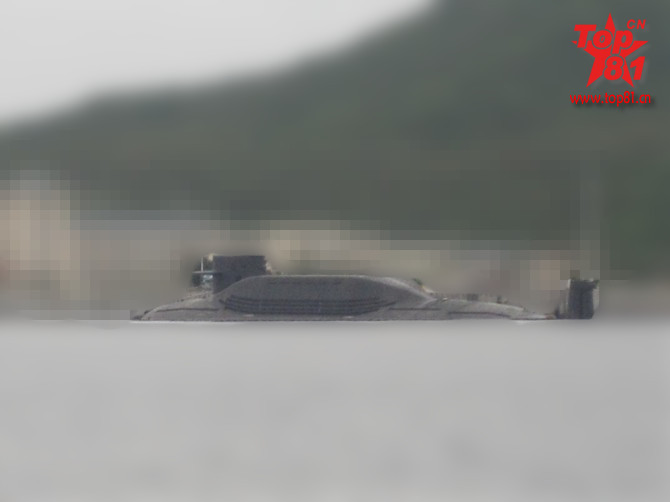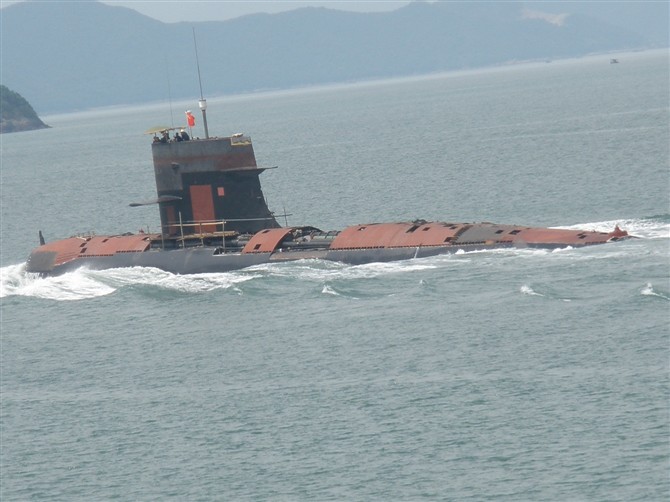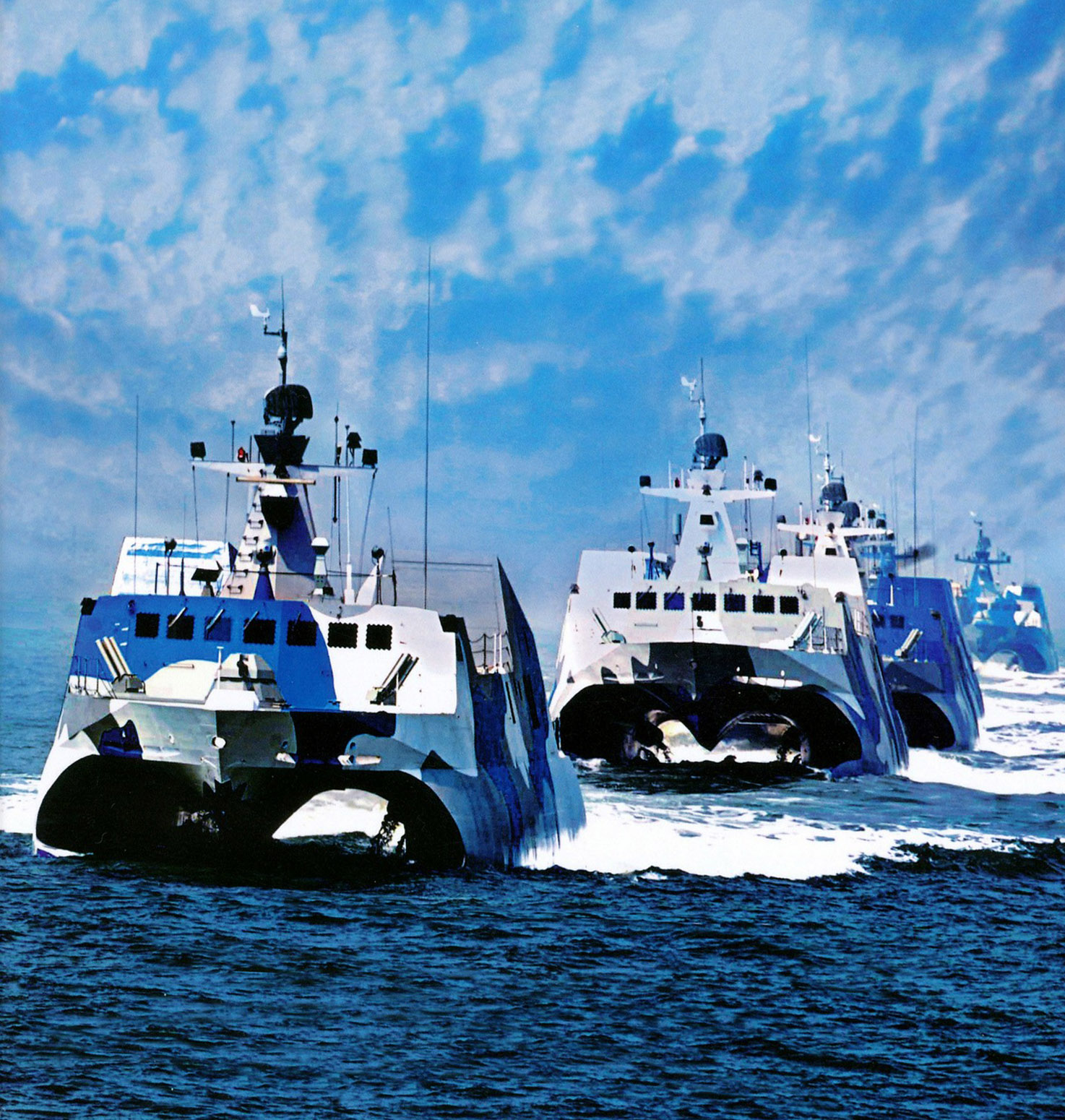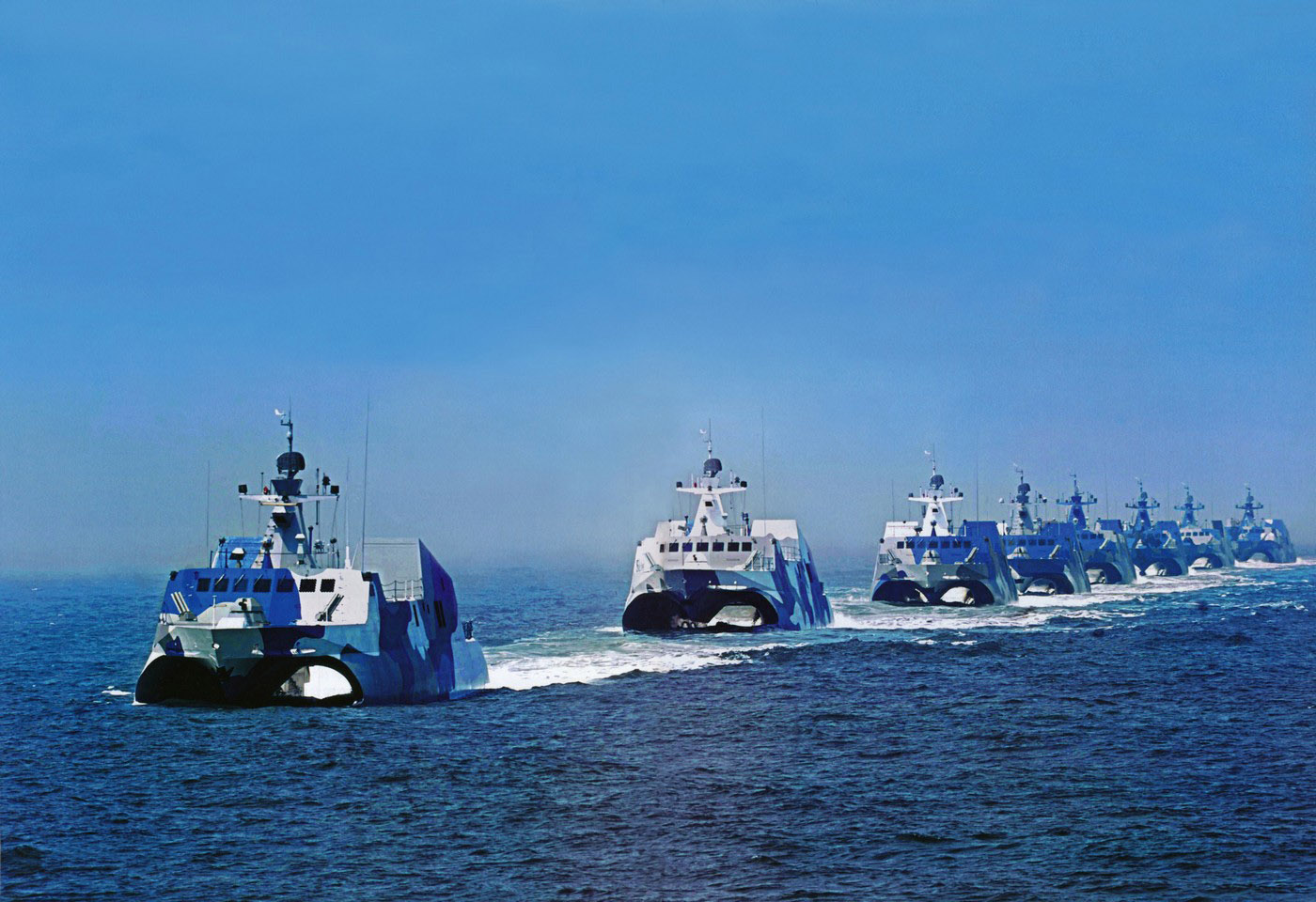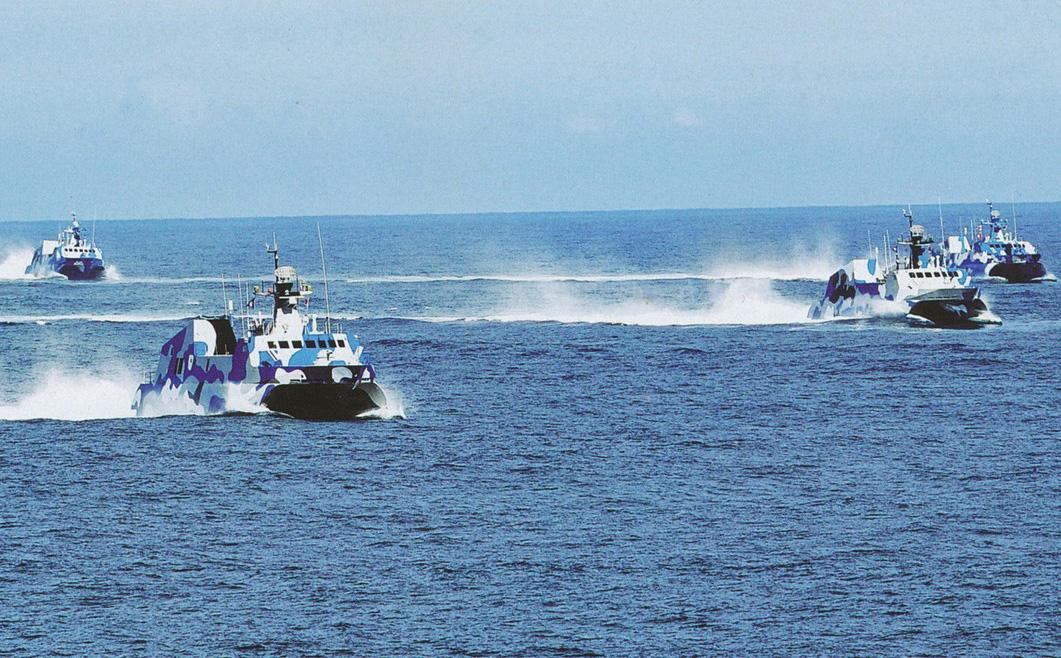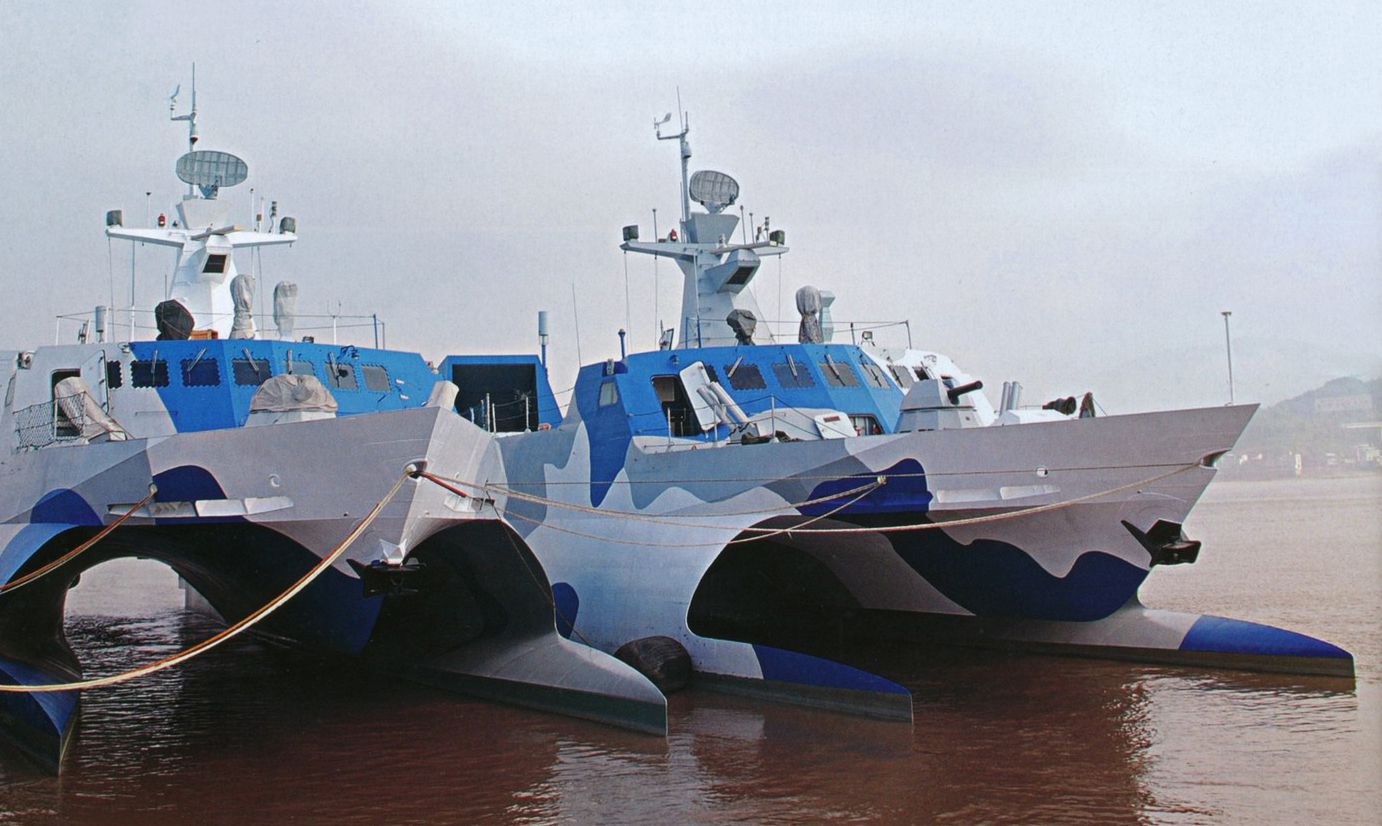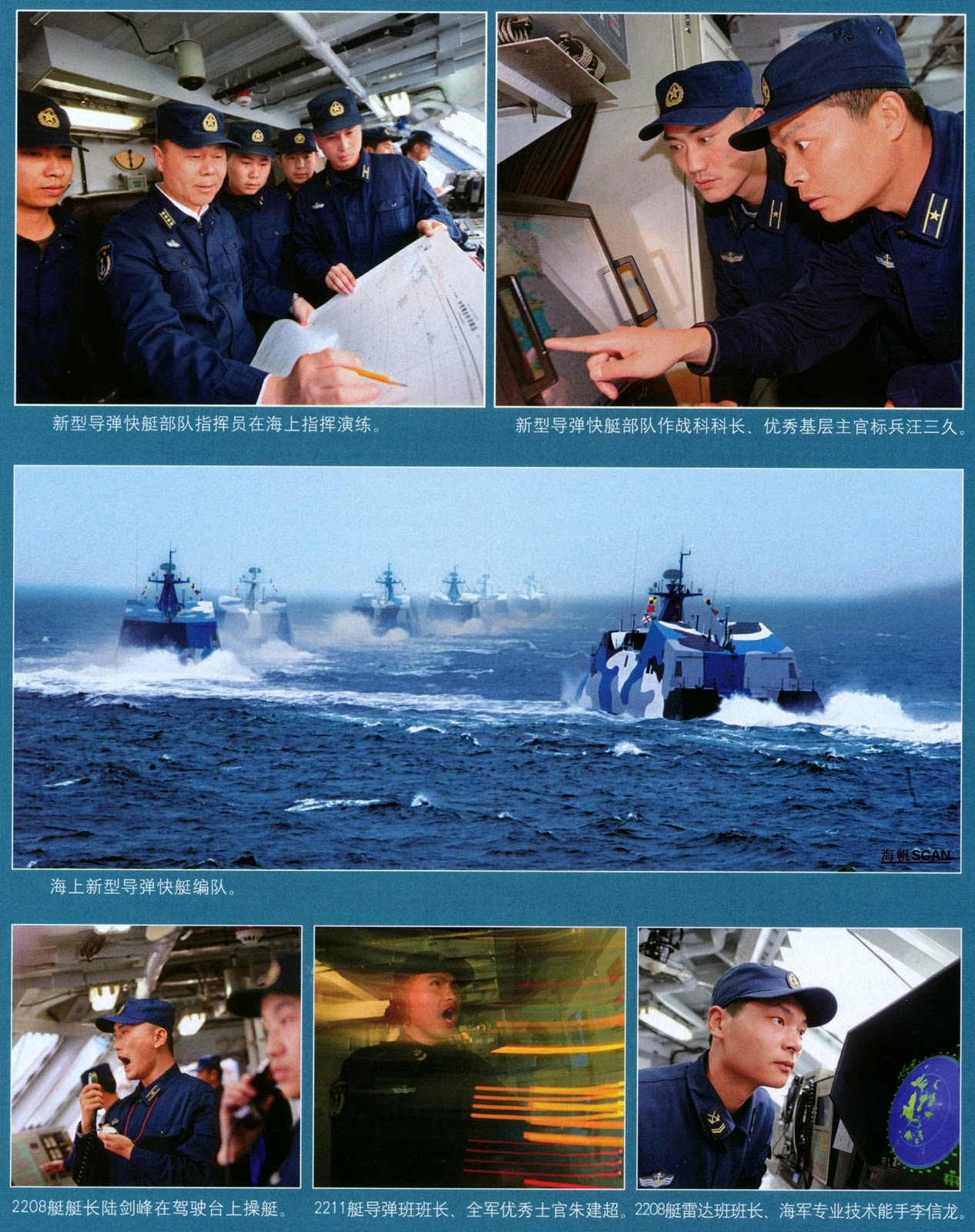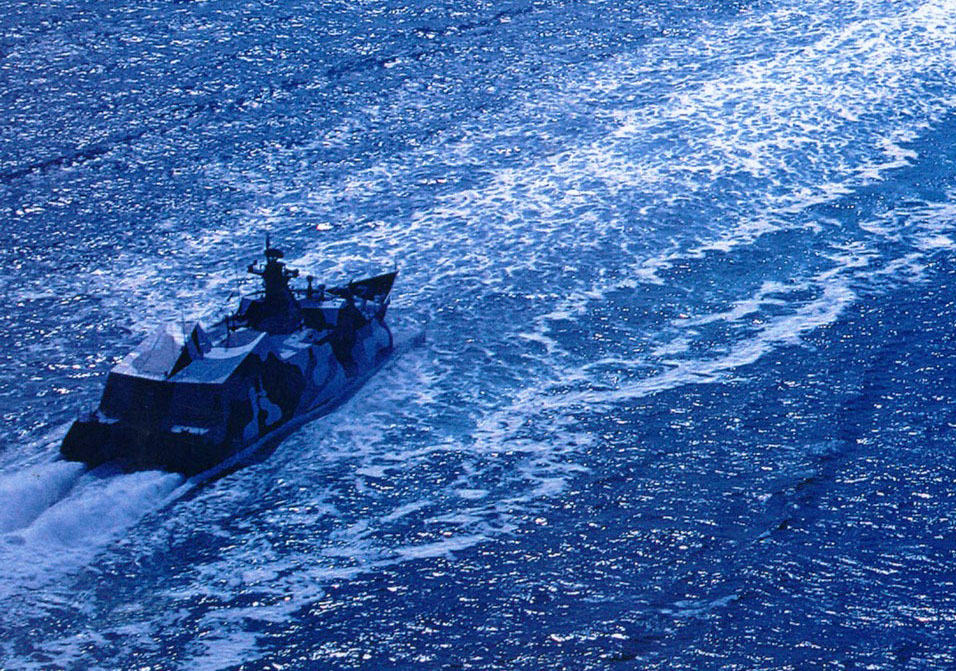How to install the app on iOS
Follow along with the video below to see how to install our site as a web app on your home screen.
Note: This feature may not be available in some browsers.
You are using an out of date browser. It may not display this or other websites correctly.
You should upgrade or use an alternative browser.
You should upgrade or use an alternative browser.
Chinese Navy (PLAN) News & Discussions
- Thread starter AZADPAKISTAN2009
- Start date
no_name
ELITE MEMBER

- Joined
- Jan 25, 2010
- Messages
- 3,530
- Reaction score
- 0

094B
Looks more like a Kilo to me.
Akasa
SENIOR MEMBER

- Joined
- Aug 9, 2008
- Messages
- 7,227
- Reaction score
- 9
- Country
- Location
Looks more like a Kilo to me.
ChineseTiger1986, what's your opinion?
Martian2
SENIOR MEMBER

- Joined
- Dec 15, 2009
- Messages
- 5,809
- Reaction score
- -37

Kilo has distinctive white round circle

Photograph posted by SinoSoldier
I agree with No_name, because of an apparent flattened white circle on the sub in the photograph posted by SinoSoldier. Also, the overall sub shape looks similar. Look at the front upper-hull's triangular taper. It's practically identical.
SenLin
FULL MEMBER

- Joined
- Dec 6, 2011
- Messages
- 228
- Reaction score
- 0
- Country
- Location
中国航母自主动力航行首曝光
This video shows China's ex-Varyag more or less moving on it's on, without any Tugboats.
But without power from the engine.
This video shows China's ex-Varyag more or less moving on it's on, without any Tugboats.
But without power from the engine.
Martian2
SENIOR MEMBER

- Joined
- Dec 15, 2009
- Messages
- 5,809
- Reaction score
- -37

Upgraded Type 092 Xia-class nuclear ballistic missile submarine (SSBN)
http://cnair.top81.cn/han_xia_kilo_song.htm
"The single Xia class SSBN (Type 092G/09II, 6,500t dived) was seen during the military parade in April 2009. This modernization project included a new black paint, a new bow mounted sonar (H/SQG-262B), a redesigned casing housing longer missile launch tubes, plus upgraded combat control systems for launching new SLBMs. Initially armed with 12 JL-1 (CSS-N-3) SLBMs (inertial guidance to 1,700km with a single 1.25MT nuclear warhead, improved version has a range of 2,500km), it is now believed to carry the new JL-2 SLBMs (CSS-NX-4, with 3 or 4 MIRV at 90kT each, range 8,000km).
...
Instead, it has become a valuable testbed for PLAN to shape its tactics and strategies for modern SSBN warfare since the first successful test fire of JL-1 SLBM in 1988. It was reported that a JL-2 SLBM was successfully test-fired from 406 on June 16, 2005."
[Note: Thank you to Greyboy2 for the picture.]
Martian2
SENIOR MEMBER

- Joined
- Dec 15, 2009
- Messages
- 5,809
- Reaction score
- -37

"Chinese Type 039G Song-class No. 314 naval submarine docks at the Ngong Shuen Chau naval base in Hong Kong."
A Type 039G Song-class diesel-electric submarine is quiet, because it has a modern teardrop hull shape, engine mounted on shock absorbers, and anechoic tiles. Apparently, a Song-class submarine was sufficiently quiet to approach undetected within 5 nautical miles of the American carrier USS Kitty Hawk.
----------
Type 039 submarine - Wikipedia, the free encyclopedia
"The Type 039 submarine (NATO code name Song class) is a class of diesel-electric submarines of the People's Liberation Army Navy. The class is the first to be fully developed within China and also the first Chinese submarine to use the modern teardrop hull shape.
...
Designed for attacking both other submarines and surface ships with torpedoes, the submarine uses a modern teardrop-shape hull for underwater performance. The hull incorporates four rudders and is propelled by a single propeller. For quieter operation, the engine was mounted with shock absorbers and the hull is plated in rubber tiles for sound deadening.
...
Improvements led to the specification for the Type 039G, which became the bulk of production, with seven of the type entering service. Elimination of the stepped design for the conning tower is the primary visual cue for identification of the G variant.
...
Possible incidents
On October 26, 2006, a Chinese Song class submarine is said to have "popped up" and "surfaced within firing range of its torpedoes and missiles before being detected" within 5 nautical miles (9 km) of the carrier USS Kitty Hawk while she was operating in the Pacific Ocean.[1]"
Martian2
SENIOR MEMBER

- Joined
- Dec 15, 2009
- Messages
- 5,809
- Reaction score
- -37

Z-9C navalized helicopter
Harbin Z-9 - Wikipedia, the free encyclopedia
"The naval version introduced in the 1990s is known as the Z-9C. As well as SAR (search and rescue) and ASW (anti-submarine warfare) duties, the Z-9C can be fitted with an X-band KLC-1 surface search radar to detect surface targets beyond the range of shipborne radar systems.[3]
...
Z-9EC: ASW variant produced for the Pakistan Naval Air Arm. Configured with pulse-compression radar, low frequency dipping sonar, radar warning receiver and doppler navigation system, it is also armed with torpedoes for use aboard Pakistan Navy's F-22P Zulfiquar class frigates.[4][5]"
[Note: Thank you to Greyboy2 for the picture.]
Martian2
SENIOR MEMBER

- Joined
- Dec 15, 2009
- Messages
- 5,809
- Reaction score
- -37
American defense equipment jamming, overheating, out of ammo, or overwhelmed
My following post is a concise argument for the vulnerability of an U.S. carrier battle group. I intentionally restricted the discussion to China's defensive strategy.
For the sake of brevity, I had decided not to pursue the issues of U.S. defense equipment jamming, overheating, and running out of ammo. For example, an American CIWS is useless if it jams, overheats, runs out of ammo, or is overwhelmed by simultaneous incoming missiles (e.g. it can only defend against one missile at a time).
----------
China's Blitzkrieg on U.S. Carrier

A symbol of power or a sitting duck in Chinese waters? You decide.
[A handout picture from U.S. Navy dated Feb. 21, 2007, shows the Nimitz-class aircraft carrier USS John C. Stennis as it conducts operations in the Persian Gulf. (Credit: Agence France-Presse/Getty Images)]
In case anyone missed it, here's my blitzkrieg assault on a carrier force. The converse is also true. A defender can use the same strategy and tactics on a future Chinese carrier battle group. The strategy is to overwhelm the limited defense capabilities of a carrier group and to give them little time to react.
If I were a Chinese general, I believe I can sink the U.S. Navy if they come within range of my weapons.
I would use a combined attack. All attacks will be coordinated to arrive near-simultaneously at the target. I would designate a salvo of 50 ASBMs (i.e. anti-ship ballistic missiles) per carrier and 10 ASBMs per Aegis destroyer. I would simultaneously send swarms of CJ-10 cruise missiles at the U.S. ships. I would also deploy salvos of Chinese Exocets (i.e. C-802s). On the sea, I would send groups of "Type 022 (Houbei Class) Fast Attack Missile Crafts." Finally, I would send swarms of attack submarines (i.e. Type 093 Shangs, Yuans, Songs, and Kilos) to fire Yu-6 (i.e. Mark 48-class) torpedoes at the U.S. ships.
If the U.S. Navy can survive a sustained, concentrated, and simultaneous bombardment from space (ballistic missiles), air (anti-ship missiles), sea-skimming missiles, and underwater torpedoes then they truly are the best in the world. If not, the U.S. Navy will be at the bottom of the Pacific Ocean. If the U.S. wants to bully China, they can expect China to hit the U.S. Navy with everything in the Chinese arsenal. The U.S. has never been tested by a massive combined attack. There is a good chance the U.S. Navy will not survive.
As soon as they are available, China's Tomahawk-class CJ-10 cruise missiles will be supplemented by stealthy HN-2000 cruise missiles. Notably, the HN-2000 has a "supersonic terminal flight phase" to apply even more pressure on the target carrier group.
http://project2049.net/documents/assassin_...ise_missile.pdf
"Global Strike and the Chinese Anti-Ship Cruise Missile: HN-2000
China is currently developing its next-generation cruise missile, the Hong Niao-2000 (HN-2000). This missile will reportedly be equipped with millimeter wave radar, infrared image mapping, laser radar, synthetic-aperture radar (SAR) and the Chinese Beidou satellite guidance system, for accuracies of 1-3 meters. This missile will also incorporate the latest stealth technologies and have a supersonic terminal flight phase, with an expected range of 4,000km.

Test-firing of C-802 cruise missile on a target ship
----------
One more thing, as soon as China's UAVs (i.e. unmanned aerial vehicles) and/or stealth UAVs with air-to-surface missiles are ready, I would throw them into the mix as well. This will continue the strategy of creating maximum pressure, complexity, and chaos within a small time-window.
China plans to export Advanced UAV, carrying with air-surface missiles*|*China Military Power Mashup
"China plans to export Advanced UAV, carrying with air-surface missiles
Posted on 31 January 2010 by admin
Feb.01 (China Military Power Reporting by Johanthan Weng) — Recently, Xi’an Modern Control Technology Institute was successfully passed a design review of missile and parts used by an unmanned reconnaissance and attack aircraft, by the Project Management Department of AVIC. This event tells a truth that the Xi’an Modern Control Technology Institute have made a major breakthrough in the field of Attacking UAV development.
The institute self-financed and carried out three projects development. Especially, the distinguished performance of UAV in counter-terrorism, targeted killings, maintaining border stability has been dig out. At present, the reconnaissance-attack UAV made by this institute has successfully air-launched missile and hit the target for the first time in China. The unmanned surveillance attack aircraft for PLA will be formally engineering projected. The variant type of similar UAV has been signed exportation agreement for expanding overseas market."
----------
China's C-802 or "Chinese Exocet" anti-ship missile
China has many options in repelling hostile capital ships in her waters. Let's look at some of the more obvious choices.
Option #1: Attack with land-based or ship-fired sea-skimming C-802/"Chinese Exocet."
The following video is a live-fire comparison test of China's C-801 (e.g. a progenitor of the C-802) and France's Exocet:
http://www.youtube.com/watch?v=TCeTYbMty1U&feature=related
----------
China's deadly Yu-6 torpedo/reverse-engineered Mark 48 heavyweight torpedo
China's Option #2: Use a conventionally-powered or nuclear attack submarine to fire a keel-breaker Yu-6/Mark 48 heavyweight torpedo.
The power of a single Yu-6/Mark 48 torpedo can be seen in the following video:
http://www.youtube.com/watch?v=y863lraJ3F4
"paradisedriver — August 01, 2008 — Training exercise video showing a "kill" in one shot."

Yu-6 heavyweight torpedo
Yu-6 torpedo - Wikipedia, the free encyclopedia
"Yu-6 torpedo
From Wikipedia, the free encyclopedia
Yu-6 (鱼-6) torpedo is the Chinese equivalent of the Mark 48 torpedo. In addition to wire and active / passive homing guidance, wake homing guidance is also incorporated. Many domestic Chinese sources have claimed that Yu-6 torpedo is in the same class as the Mk 48 Mod. 4 torpedo, but official information of Yu-6 torpedo released by the Chinese government is limited and such claim thus cannot be confirmed by sources outside China."
----------
China's anti-ship ballistic missile (i.e. ASBM) with incoming Mach 10 warhead
Based on 50 years of missile-technology mastery, China has recently developed a third option: the anti-ship ballistic missile (i.e. ASBM) with an incoming Mach 10 warhead.

China's ASBMs
I don't know whether the following land-based test was conducted with a kinetic or High-Explosive warhead. However, if an aircraft carrier gets hit, it looks like it will be out of commission.

Simulated ASBM strikes on aircraft carrier deck mock-up on land.
http://defensetech.org/2010/06/30/china-to...fourth-of-july/
"Marvel · 1 week ago
If somebody could clarify, the ASBM would not be a unitary warhead, correct? I remember reading somewhere that it may be a sort of cluster munition designed to puncture the carrier deck with flechettes, rendering it inoperable."
----------
A single hit means catastrophe
I believe the odds favor the attacker. Only one or two missiles need to get past the defender to cause severe damage and create massive confusion/panic. One Yu-6 torpedo (i.e. a clone of the Mark 48 heavyweight torpedo) can split a destroyer in half.
While a massive combined and simultaneous attack is logical and predictable, I am not aware of anyone claiming a 100 percent full-proof U.S. defense system. Also, China has the capability to launch thousands of missiles and torpedoes at targeted capital ships. It is not just a matter of surviving the first wave. The defenders must survive a sustained attack; without fail.
It is my judgment that when a defender faces an attacker with technological-proximity, the odds are heavily in favor of the attacker. I have read the U.S. strategy is to avoid serious risk to its capital ships. As I understand it, the current plan is to outfit American submarines with conventional tomahawk cruise missiles and threaten to launch many of them at China during a war.
The U.S. wants to be the attacker and shift the burden of defense onto China. The U.S. capital ships will be kept safely out of the strike range of Chinese missiles and quiet diesel submarines with Yu-6 torpedoes lurking near China.
----------
HEAT, cluster bombs, EMP, or thermobaric? What is your preference?
Asia Times Online :: China News, China Business News, Taiwan and Hong Kong News and Business.
"The outcome of a simulation published by Orbis, an American journal on international relations and US foreign policy, clearly did its job in making military circles uneasy. After a hit by a Dong Feng 21D, it took the nuclear-powered supercarrier USS George Washington a mere 20 minutes to sink.
The DF-21D, as the missile is commonly called, is a modification of a solid-propellant, single-warhead medium-range ballistic missile that China has been working on since the late 1960s. The newest version, also going under the North Atlantic Treaty Organization reporting name CSS-5 Mod-4, is believed to come with the unique feature that it can target a moving aircraft carrier as far away as 3,000 kilometers from a land-based mobile launcher.
Enabled by this new weapon, China's People's Liberation Army (PLA) hopes to gain the option to control the West Pacific from land, as opposed to engaging with the US Navy in sea battles that China would be unlikely to win. If the DF-21D is really as sophisticated as has been widely speculated, the US would have to risk its neck when coming to South Korea's, Japan's or Taiwan's aid in the event of Chinese military aggression.
It can safely be assumed that a fair portion of Washington's military strategies would be rendered useless it the US were to lose the ability to securely travel anywhere using aircraft carriers from which jet fighters start their devastatingly precise bombing campaigns - as has been seen in the wars against Serbia and Saddam Hussein's Iraq.
Like the DF-21D's earliest predecessor, the German V-2, a long-range World War II ballistic missile that the Nazis called a Wunderwaffe, China's anti-ship ballistic missile remains shrouded in mystery. Military experts from Washington to Taipei have been left guessing its exact capabilities. It is suggested that the missile's high-angle re-entry into the atmosphere, as well as its speed, make it almost impossible to defend against.
What further worries American defense analysts is that the Chinese apparently have the advantage of being able to screw on almost anything that's found in the PLA's warhead arsenals, such as HEAT shells, which are extremely efficient at penetrating steel, as well as cluster bombs, which eject smaller sub-munitions.
The Chinese could even destroy their opponents' electronic control systems - critical to the operation of ground vehicles and aircraft - by producing damaging current and voltage surges with the help of electromagnetic pulse bombs loaded into the DF-21D. Yet another option would be to fit a missile with a thermobaric fuel-air bomb. This warhead produces a blast wave of a very long duration, a feature that is useful in military applications where the attacker aims to increase the number of casualties and cause greater damage to infrastructure.
As a strong indication of how serious the US sees the threat of China's missiles, US Defense Secretary Robert Gates recently lamented that the DF-21D 'has the ability to disrupt [American] freedom of movement and narrow our strategic options'."
[Note: I have compiled my arguments for the new members on the forum to bring everyone up to speed.]
----------
China can change/destabilize the military balance in East Asia through nuclear or non-nuclear means. Here is a follow-up on the non-nuclear aspect of China's ASBM (i.e. anti-ship ballistic missile) affecting U.S. military strategy and planning.
Though Defense Secretary Robert Gates never mentions China by name, he has raised the prospect of moving away from a carrier-centric Navy because of China's development of asymmetric weapons to defeat U.S. carriers.
New Wars
"May 7, 2010 ... Speech by Secretary of Defense Robert M. Gates at the Navy .... why the Navy needs to rethink its carrier centric policy in this new era .... this year said the move would put carrier procurement on “a more fiscally sustainable path .... Or the cruises could drain away ships, money and sailors given ..."
Gates To Navy: Anchors Away - IBD - Investors.com
"Gates To Navy: Anchors Away
Posted 06:16 PM ET

Four Chinese submarines lead 56 destroyers, frigates, missile boats, subs and planes off the port of Qingdao in April 2009 after tensions flared with the U.S. in the South China Sea. (Photo credit: AFP/Getty Images/Newscom)
Military Advantage: Our defense secretary proposes doing what no other foreign adversary has done: sink the U.S. Navy. We don't need those billion-dollar destroyers, he says. Meanwhile, the Chinese navy rushes to fill the vacuum.
Once Britannia ruled the waves, later to be replaced by America and its Navy. From the Battle of Midway to President Reagan's 600-ship fleet that helped win the Cold War, naval supremacy has been critical to the protection and survival of our nation.
Which is why we find the recent remarks of Defense Secretary Robert Gates to the Navy League at the Sea-Air-Space expo so disturbing. He seems to think naval supremacy is a luxury we can't afford and that, like every other aspect of our military, an already shrunken U.S. Navy needs to downsize.
"As we learned last year, you don't necessarily need a billion-dollar guided missile destroyer to chase down and deal with a bunch of teenage pirates wielding AK-47s and RPGs (rocket-propelled grenades)," Gates quipped.
We are not laughing.
Pubescent pirates aren't the only threat we face. Last month, a Chinese naval task force from the East Sea Fleet — including the imposing Sovremenny-class guided missile destroyers, frigates and submarines — passed through the Miyako Strait near Okinawa, a move that sent shock waves through Japan.
The exercise took place just days after warships from the North Sea Fleet returned from what China's army-navy called "confrontation exercises" in the South China Sea.
"Do we really need 11 carrier strike groups for another 30 years when no other country has more than one?" Gates asked. The answer is yes. Our national interests are global, in every ocean. Some will be in port, and others will be meeting commitments from the Persian Gulf to the Taiwan Strait.
It's well to consider the "new challenges," as Gates put it, in the form of anti-ship missiles in the hands of the Lebanese Shiite militia Hezbollah or the threat posed by Iran's arsenal of missiles, mines and speed boats near the Strait of Hormuz. But new challenges don't make the old ones go away. We must be prepared to meet them all.
"At the end of the day, we have to ask whether this nation can really afford a Navy that relies on $3 billion to $6 billion destroyers, $7 billion submarines and $11 billion carriers," Gates said.
The question is whether we can afford not to. Defense, unlike health care, is a constitutional imperative."
Defense.gov Speech:
U.S. Department of Defense
Office of the Assistant Secretary of Defense (Public Affairs)
Speech
"Naval War College (Newport, RI)
As Delivered by Secretary of Defense Robert M. Gates, Newport, RI, Friday, April 17, 2009
Good morning. It’s a real pleasure to be here for my first visit as secretary to the Naval War College. Based on the weather I’m thinking I may move the Pentagon here.
...
In this respect, it is important to keep some perspective. For example, as much as the U.S. Navy has shrunk since the end of the Cold War, in terms of tonnage, its battle fleet, by one estimate, is still larger than the next 13 navies combined – and 11 of those 13 navies are U.S. allies or partners. In terms of capabilities, the over-match is even greater. No country in the rest of the world has anything close to the reach and firepower to match a carrier strike group. And the United States has and will maintain eleven until at least 2040. I might also note that we have a number of Expeditionary Strike Groups and will in the not-too-distant future will be able to carry the F-35.
Potential adversaries are well-aware of this fact, which is why, despite significant naval modernization programs underway in some countries, no one intends to bankrupt themselves by challenging the U.S. to a shipbuilding competition akin to the Dreadnought arms race prior to World War I. Instead, we’ve seen their investments in weapons geared to neutralize our advantages – to deny the U.S. military freedom of movement and action while potentially threatening our primary means of projecting power: our bases, sea and air assets, and the networks that support them.
This is a particular concern with aircraft carriers and other large, multi-billion dollar blue-water surface combatants – where the loss of even one ship would be a national catastrophe. We know other nations are working on ways to thwart the reach and striking power of the U.S. battle fleet – whether by producing stealthy submarines in quantity or developing anti-ship missiles with increasing range and accuracy. We ignore these developments at our peril.
The Royal Navy’s greatest defeat in World War II – the sinking of the capital ships H.M.S. Repulse and the brand new Prince of Wales by Japanese aircraft just days after Pearl Harbor – was due in part to a command with little appreciation for air power, and in particular the threat posed by a single, air-delivered torpedo."
My following post is a concise argument for the vulnerability of an U.S. carrier battle group. I intentionally restricted the discussion to China's defensive strategy.
For the sake of brevity, I had decided not to pursue the issues of U.S. defense equipment jamming, overheating, and running out of ammo. For example, an American CIWS is useless if it jams, overheats, runs out of ammo, or is overwhelmed by simultaneous incoming missiles (e.g. it can only defend against one missile at a time).
----------
China's Blitzkrieg on U.S. Carrier

A symbol of power or a sitting duck in Chinese waters? You decide.
[A handout picture from U.S. Navy dated Feb. 21, 2007, shows the Nimitz-class aircraft carrier USS John C. Stennis as it conducts operations in the Persian Gulf. (Credit: Agence France-Presse/Getty Images)]
In case anyone missed it, here's my blitzkrieg assault on a carrier force. The converse is also true. A defender can use the same strategy and tactics on a future Chinese carrier battle group. The strategy is to overwhelm the limited defense capabilities of a carrier group and to give them little time to react.
If I were a Chinese general, I believe I can sink the U.S. Navy if they come within range of my weapons.
I would use a combined attack. All attacks will be coordinated to arrive near-simultaneously at the target. I would designate a salvo of 50 ASBMs (i.e. anti-ship ballistic missiles) per carrier and 10 ASBMs per Aegis destroyer. I would simultaneously send swarms of CJ-10 cruise missiles at the U.S. ships. I would also deploy salvos of Chinese Exocets (i.e. C-802s). On the sea, I would send groups of "Type 022 (Houbei Class) Fast Attack Missile Crafts." Finally, I would send swarms of attack submarines (i.e. Type 093 Shangs, Yuans, Songs, and Kilos) to fire Yu-6 (i.e. Mark 48-class) torpedoes at the U.S. ships.
If the U.S. Navy can survive a sustained, concentrated, and simultaneous bombardment from space (ballistic missiles), air (anti-ship missiles), sea-skimming missiles, and underwater torpedoes then they truly are the best in the world. If not, the U.S. Navy will be at the bottom of the Pacific Ocean. If the U.S. wants to bully China, they can expect China to hit the U.S. Navy with everything in the Chinese arsenal. The U.S. has never been tested by a massive combined attack. There is a good chance the U.S. Navy will not survive.
As soon as they are available, China's Tomahawk-class CJ-10 cruise missiles will be supplemented by stealthy HN-2000 cruise missiles. Notably, the HN-2000 has a "supersonic terminal flight phase" to apply even more pressure on the target carrier group.
http://project2049.net/documents/assassin_...ise_missile.pdf
"Global Strike and the Chinese Anti-Ship Cruise Missile: HN-2000
China is currently developing its next-generation cruise missile, the Hong Niao-2000 (HN-2000). This missile will reportedly be equipped with millimeter wave radar, infrared image mapping, laser radar, synthetic-aperture radar (SAR) and the Chinese Beidou satellite guidance system, for accuracies of 1-3 meters. This missile will also incorporate the latest stealth technologies and have a supersonic terminal flight phase, with an expected range of 4,000km.

Test-firing of C-802 cruise missile on a target ship
----------
One more thing, as soon as China's UAVs (i.e. unmanned aerial vehicles) and/or stealth UAVs with air-to-surface missiles are ready, I would throw them into the mix as well. This will continue the strategy of creating maximum pressure, complexity, and chaos within a small time-window.
China plans to export Advanced UAV, carrying with air-surface missiles*|*China Military Power Mashup
"China plans to export Advanced UAV, carrying with air-surface missiles
Posted on 31 January 2010 by admin
Feb.01 (China Military Power Reporting by Johanthan Weng) — Recently, Xi’an Modern Control Technology Institute was successfully passed a design review of missile and parts used by an unmanned reconnaissance and attack aircraft, by the Project Management Department of AVIC. This event tells a truth that the Xi’an Modern Control Technology Institute have made a major breakthrough in the field of Attacking UAV development.
The institute self-financed and carried out three projects development. Especially, the distinguished performance of UAV in counter-terrorism, targeted killings, maintaining border stability has been dig out. At present, the reconnaissance-attack UAV made by this institute has successfully air-launched missile and hit the target for the first time in China. The unmanned surveillance attack aircraft for PLA will be formally engineering projected. The variant type of similar UAV has been signed exportation agreement for expanding overseas market."
----------
China's C-802 or "Chinese Exocet" anti-ship missile
China has many options in repelling hostile capital ships in her waters. Let's look at some of the more obvious choices.
Option #1: Attack with land-based or ship-fired sea-skimming C-802/"Chinese Exocet."
The following video is a live-fire comparison test of China's C-801 (e.g. a progenitor of the C-802) and France's Exocet:
http://www.youtube.com/watch?v=TCeTYbMty1U&feature=related
----------
China's deadly Yu-6 torpedo/reverse-engineered Mark 48 heavyweight torpedo
China's Option #2: Use a conventionally-powered or nuclear attack submarine to fire a keel-breaker Yu-6/Mark 48 heavyweight torpedo.
The power of a single Yu-6/Mark 48 torpedo can be seen in the following video:
http://www.youtube.com/watch?v=y863lraJ3F4
"paradisedriver — August 01, 2008 — Training exercise video showing a "kill" in one shot."

Yu-6 heavyweight torpedo
Yu-6 torpedo - Wikipedia, the free encyclopedia
"Yu-6 torpedo
From Wikipedia, the free encyclopedia
Yu-6 (鱼-6) torpedo is the Chinese equivalent of the Mark 48 torpedo. In addition to wire and active / passive homing guidance, wake homing guidance is also incorporated. Many domestic Chinese sources have claimed that Yu-6 torpedo is in the same class as the Mk 48 Mod. 4 torpedo, but official information of Yu-6 torpedo released by the Chinese government is limited and such claim thus cannot be confirmed by sources outside China."
----------
China's anti-ship ballistic missile (i.e. ASBM) with incoming Mach 10 warhead
Based on 50 years of missile-technology mastery, China has recently developed a third option: the anti-ship ballistic missile (i.e. ASBM) with an incoming Mach 10 warhead.

China's ASBMs
I don't know whether the following land-based test was conducted with a kinetic or High-Explosive warhead. However, if an aircraft carrier gets hit, it looks like it will be out of commission.

Simulated ASBM strikes on aircraft carrier deck mock-up on land.
http://defensetech.org/2010/06/30/china-to...fourth-of-july/
"Marvel · 1 week ago
If somebody could clarify, the ASBM would not be a unitary warhead, correct? I remember reading somewhere that it may be a sort of cluster munition designed to puncture the carrier deck with flechettes, rendering it inoperable."
----------
A single hit means catastrophe
I believe the odds favor the attacker. Only one or two missiles need to get past the defender to cause severe damage and create massive confusion/panic. One Yu-6 torpedo (i.e. a clone of the Mark 48 heavyweight torpedo) can split a destroyer in half.
While a massive combined and simultaneous attack is logical and predictable, I am not aware of anyone claiming a 100 percent full-proof U.S. defense system. Also, China has the capability to launch thousands of missiles and torpedoes at targeted capital ships. It is not just a matter of surviving the first wave. The defenders must survive a sustained attack; without fail.
It is my judgment that when a defender faces an attacker with technological-proximity, the odds are heavily in favor of the attacker. I have read the U.S. strategy is to avoid serious risk to its capital ships. As I understand it, the current plan is to outfit American submarines with conventional tomahawk cruise missiles and threaten to launch many of them at China during a war.
The U.S. wants to be the attacker and shift the burden of defense onto China. The U.S. capital ships will be kept safely out of the strike range of Chinese missiles and quiet diesel submarines with Yu-6 torpedoes lurking near China.
----------
HEAT, cluster bombs, EMP, or thermobaric? What is your preference?
Asia Times Online :: China News, China Business News, Taiwan and Hong Kong News and Business.
"The outcome of a simulation published by Orbis, an American journal on international relations and US foreign policy, clearly did its job in making military circles uneasy. After a hit by a Dong Feng 21D, it took the nuclear-powered supercarrier USS George Washington a mere 20 minutes to sink.
The DF-21D, as the missile is commonly called, is a modification of a solid-propellant, single-warhead medium-range ballistic missile that China has been working on since the late 1960s. The newest version, also going under the North Atlantic Treaty Organization reporting name CSS-5 Mod-4, is believed to come with the unique feature that it can target a moving aircraft carrier as far away as 3,000 kilometers from a land-based mobile launcher.
Enabled by this new weapon, China's People's Liberation Army (PLA) hopes to gain the option to control the West Pacific from land, as opposed to engaging with the US Navy in sea battles that China would be unlikely to win. If the DF-21D is really as sophisticated as has been widely speculated, the US would have to risk its neck when coming to South Korea's, Japan's or Taiwan's aid in the event of Chinese military aggression.
It can safely be assumed that a fair portion of Washington's military strategies would be rendered useless it the US were to lose the ability to securely travel anywhere using aircraft carriers from which jet fighters start their devastatingly precise bombing campaigns - as has been seen in the wars against Serbia and Saddam Hussein's Iraq.
Like the DF-21D's earliest predecessor, the German V-2, a long-range World War II ballistic missile that the Nazis called a Wunderwaffe, China's anti-ship ballistic missile remains shrouded in mystery. Military experts from Washington to Taipei have been left guessing its exact capabilities. It is suggested that the missile's high-angle re-entry into the atmosphere, as well as its speed, make it almost impossible to defend against.
What further worries American defense analysts is that the Chinese apparently have the advantage of being able to screw on almost anything that's found in the PLA's warhead arsenals, such as HEAT shells, which are extremely efficient at penetrating steel, as well as cluster bombs, which eject smaller sub-munitions.
The Chinese could even destroy their opponents' electronic control systems - critical to the operation of ground vehicles and aircraft - by producing damaging current and voltage surges with the help of electromagnetic pulse bombs loaded into the DF-21D. Yet another option would be to fit a missile with a thermobaric fuel-air bomb. This warhead produces a blast wave of a very long duration, a feature that is useful in military applications where the attacker aims to increase the number of casualties and cause greater damage to infrastructure.
As a strong indication of how serious the US sees the threat of China's missiles, US Defense Secretary Robert Gates recently lamented that the DF-21D 'has the ability to disrupt [American] freedom of movement and narrow our strategic options'."
[Note: I have compiled my arguments for the new members on the forum to bring everyone up to speed.]
----------
China can change/destabilize the military balance in East Asia through nuclear or non-nuclear means. Here is a follow-up on the non-nuclear aspect of China's ASBM (i.e. anti-ship ballistic missile) affecting U.S. military strategy and planning.
Though Defense Secretary Robert Gates never mentions China by name, he has raised the prospect of moving away from a carrier-centric Navy because of China's development of asymmetric weapons to defeat U.S. carriers.
New Wars
"May 7, 2010 ... Speech by Secretary of Defense Robert M. Gates at the Navy .... why the Navy needs to rethink its carrier centric policy in this new era .... this year said the move would put carrier procurement on “a more fiscally sustainable path .... Or the cruises could drain away ships, money and sailors given ..."
Gates To Navy: Anchors Away - IBD - Investors.com
"Gates To Navy: Anchors Away
Posted 06:16 PM ET

Four Chinese submarines lead 56 destroyers, frigates, missile boats, subs and planes off the port of Qingdao in April 2009 after tensions flared with the U.S. in the South China Sea. (Photo credit: AFP/Getty Images/Newscom)
Military Advantage: Our defense secretary proposes doing what no other foreign adversary has done: sink the U.S. Navy. We don't need those billion-dollar destroyers, he says. Meanwhile, the Chinese navy rushes to fill the vacuum.
Once Britannia ruled the waves, later to be replaced by America and its Navy. From the Battle of Midway to President Reagan's 600-ship fleet that helped win the Cold War, naval supremacy has been critical to the protection and survival of our nation.
Which is why we find the recent remarks of Defense Secretary Robert Gates to the Navy League at the Sea-Air-Space expo so disturbing. He seems to think naval supremacy is a luxury we can't afford and that, like every other aspect of our military, an already shrunken U.S. Navy needs to downsize.
"As we learned last year, you don't necessarily need a billion-dollar guided missile destroyer to chase down and deal with a bunch of teenage pirates wielding AK-47s and RPGs (rocket-propelled grenades)," Gates quipped.
We are not laughing.
Pubescent pirates aren't the only threat we face. Last month, a Chinese naval task force from the East Sea Fleet — including the imposing Sovremenny-class guided missile destroyers, frigates and submarines — passed through the Miyako Strait near Okinawa, a move that sent shock waves through Japan.
The exercise took place just days after warships from the North Sea Fleet returned from what China's army-navy called "confrontation exercises" in the South China Sea.
"Do we really need 11 carrier strike groups for another 30 years when no other country has more than one?" Gates asked. The answer is yes. Our national interests are global, in every ocean. Some will be in port, and others will be meeting commitments from the Persian Gulf to the Taiwan Strait.
It's well to consider the "new challenges," as Gates put it, in the form of anti-ship missiles in the hands of the Lebanese Shiite militia Hezbollah or the threat posed by Iran's arsenal of missiles, mines and speed boats near the Strait of Hormuz. But new challenges don't make the old ones go away. We must be prepared to meet them all.
"At the end of the day, we have to ask whether this nation can really afford a Navy that relies on $3 billion to $6 billion destroyers, $7 billion submarines and $11 billion carriers," Gates said.
The question is whether we can afford not to. Defense, unlike health care, is a constitutional imperative."
Defense.gov Speech:
U.S. Department of Defense
Office of the Assistant Secretary of Defense (Public Affairs)
Speech
"Naval War College (Newport, RI)
As Delivered by Secretary of Defense Robert M. Gates, Newport, RI, Friday, April 17, 2009
Good morning. It’s a real pleasure to be here for my first visit as secretary to the Naval War College. Based on the weather I’m thinking I may move the Pentagon here.
...
In this respect, it is important to keep some perspective. For example, as much as the U.S. Navy has shrunk since the end of the Cold War, in terms of tonnage, its battle fleet, by one estimate, is still larger than the next 13 navies combined – and 11 of those 13 navies are U.S. allies or partners. In terms of capabilities, the over-match is even greater. No country in the rest of the world has anything close to the reach and firepower to match a carrier strike group. And the United States has and will maintain eleven until at least 2040. I might also note that we have a number of Expeditionary Strike Groups and will in the not-too-distant future will be able to carry the F-35.
Potential adversaries are well-aware of this fact, which is why, despite significant naval modernization programs underway in some countries, no one intends to bankrupt themselves by challenging the U.S. to a shipbuilding competition akin to the Dreadnought arms race prior to World War I. Instead, we’ve seen their investments in weapons geared to neutralize our advantages – to deny the U.S. military freedom of movement and action while potentially threatening our primary means of projecting power: our bases, sea and air assets, and the networks that support them.
This is a particular concern with aircraft carriers and other large, multi-billion dollar blue-water surface combatants – where the loss of even one ship would be a national catastrophe. We know other nations are working on ways to thwart the reach and striking power of the U.S. battle fleet – whether by producing stealthy submarines in quantity or developing anti-ship missiles with increasing range and accuracy. We ignore these developments at our peril.
The Royal Navy’s greatest defeat in World War II – the sinking of the capital ships H.M.S. Repulse and the brand new Prince of Wales by Japanese aircraft just days after Pearl Harbor – was due in part to a command with little appreciation for air power, and in particular the threat posed by a single, air-delivered torpedo."
sweetgrape
BANNED

- Joined
- Dec 5, 2011
- Messages
- 2,780
- Reaction score
- -3
- Country
- Location
The rendering of 054C.
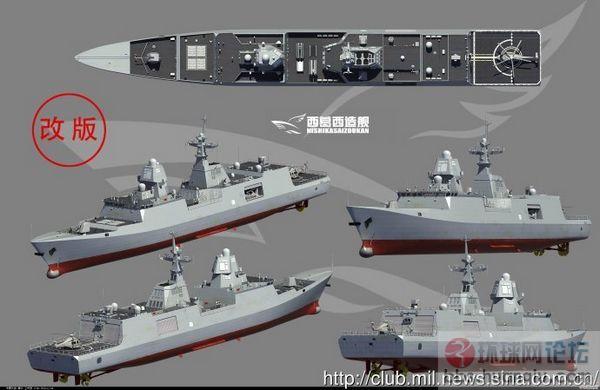
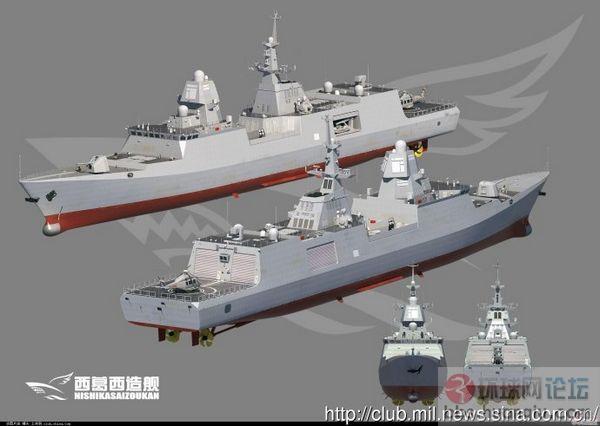
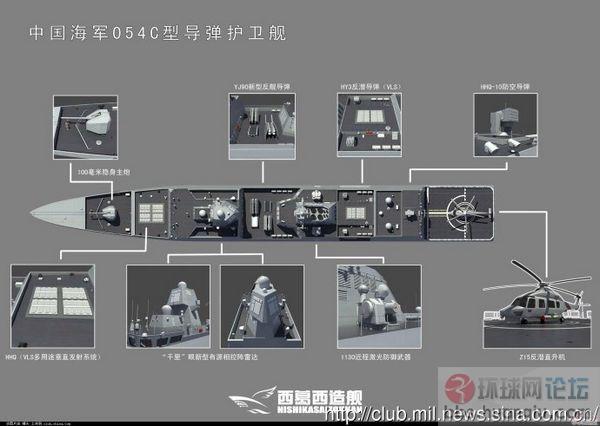
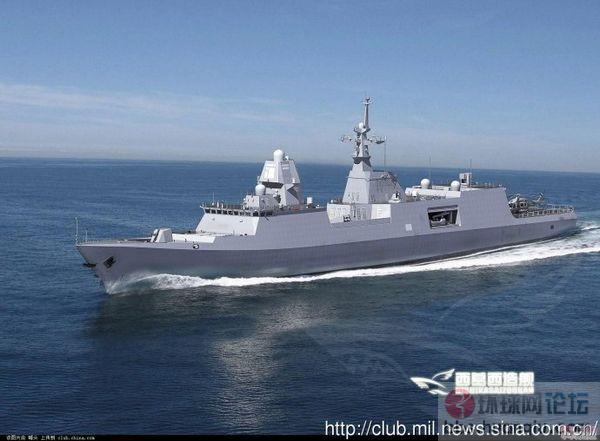




Similar threads
- Replies
- 24
- Views
- 884
- Replies
- 2
- Views
- 717
- Replies
- 2
- Views
- 135
- Replies
- 0
- Views
- 570
Latest posts
-
-
Pakistani firm wins legal battle against Canadian company at int’l court
- Latest: muhammadhafeezmalik
-
Naya Pakistan to Naya Afghanistani , New Cooking Tools in backward Afghanistan
- Latest: muhammadhafeezmalik
Pakistan Affairs Latest Posts
-
Pakistani firm wins legal battle against Canadian company at int’l court
- Latest: muhammadhafeezmalik
-
Naya Pakistan to Naya Afghanistani , New Cooking Tools in backward Afghanistan
- Latest: muhammadhafeezmalik














